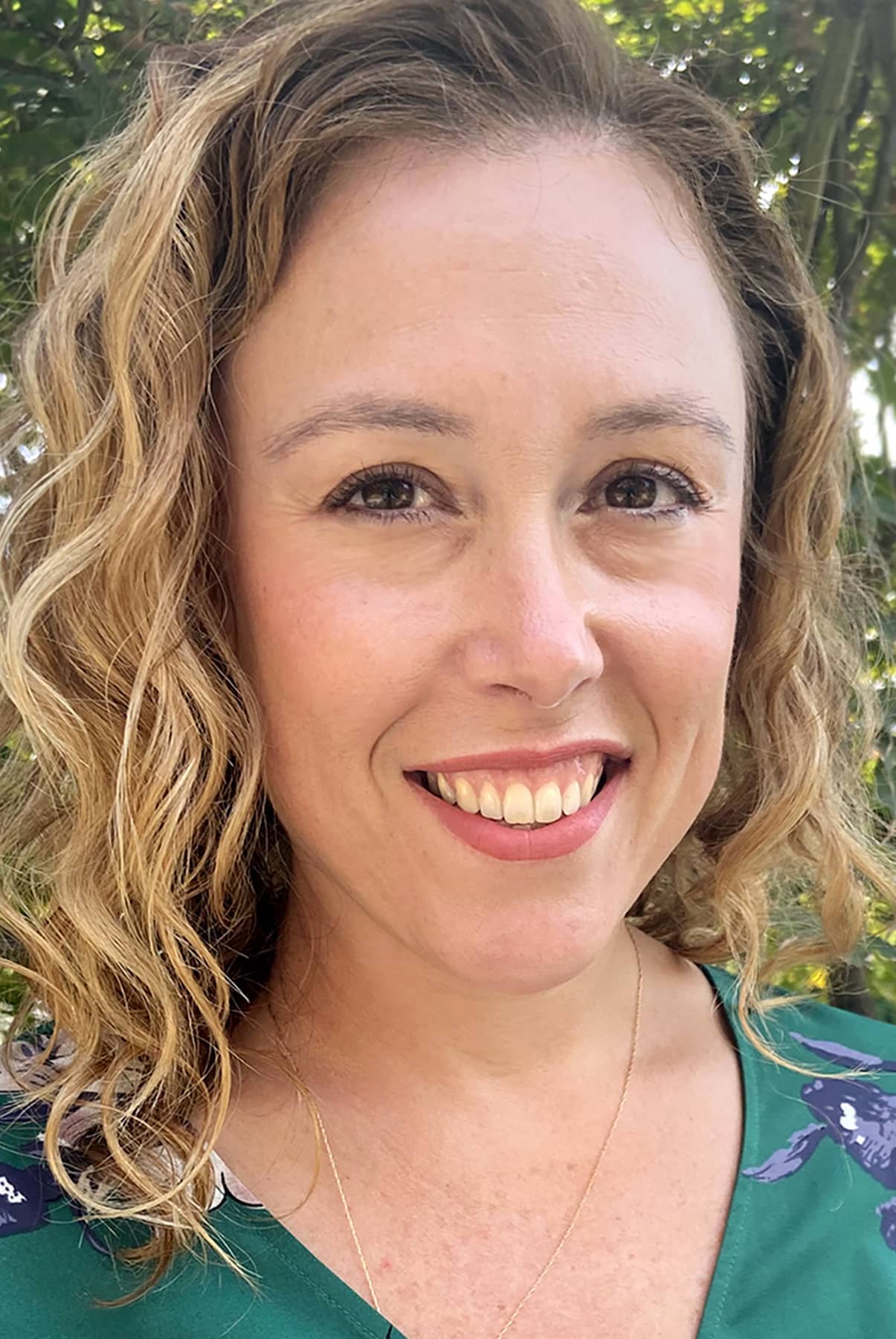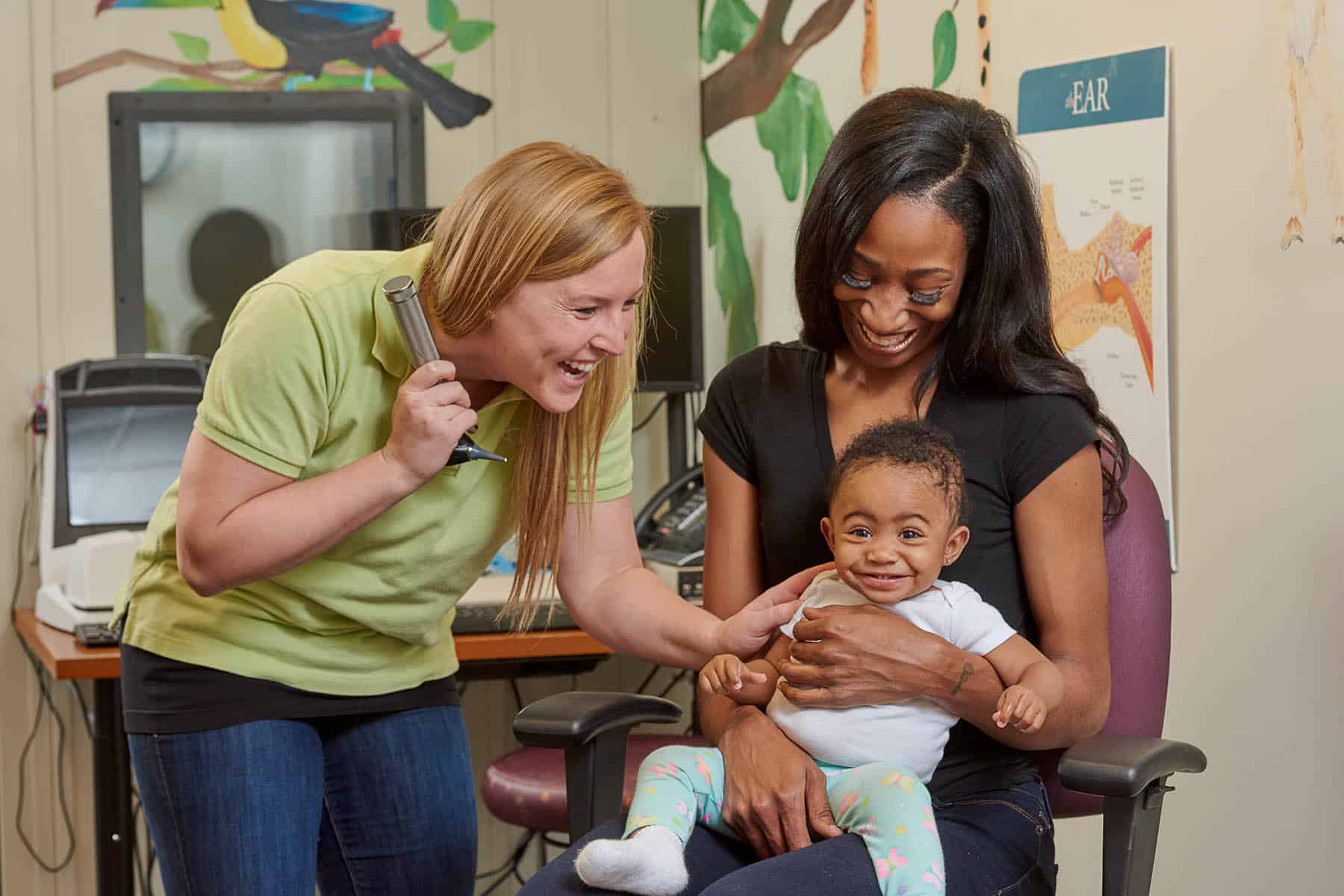As teachers of the deaf and other hearing specialists, we have a clear understanding of audiologic vocabulary. We understand terms like audiogram, otolaryngologist and sensorineural. Yet, others on our students’ educational teams may not be so knowledgeable and comfortable with these words. Parents might be learning to navigate through this jargon and need support as well. It is important that we not only understand but are able to clearly explain these words to assist families and colleagues.
Who are the professionals on a child’s audiologic team?
Audiologists are professionals who diagnose, manage and treat hearing loss and balance problems. Audiologists use a variety of tests and procedures to assess hearing and balance function and to fit and dispense hearing aids and other assistive devices for hearing loss. Audiologists receive master’s or doctoral degrees from accredited university programs.
Otolaryngologists, or ENTs, are physicians trained in medical and surgical treatment of patients with diseases and disorders of the ear, nose, throat, head and neck. Specific to our field, otolaryngologists treat ear disorders including ear infections, balance issues, ear noise or tinnitus, nerve pain and hearing loss.
Otologists/Neurotologists are otolaryngologists who have additional training in medical and surgical care of patients with issues that affect the ears, balance system and related structures of the head and neck.
What are common terms in an audiologic report?
Audiograms* are charts which graph the results of a hearing assessment. They typically have intensity (volume) going down the side and frequency (pitch) going across the top.
Audiology is the science of the assessment and management of hearing and balance issues.
Ling Sound Check* is a quick way to evaluate how well a child is hearing with his device(s). The sounds “ahh”, “eee”, “ooo”, “mmm”, “sss” and “shh” represent speech across the frequencies. This should be done at the beginning of each day as well as at the start of a therapy session to ensure optimal access to sound.
Types of hearing loss
Asymmetrical/symmetrical mean the hearing loss in each ear is different (asymmetrical) or the same (symmetrical) in terms of severity and type.
Bilateral is hearing loss in each ear.
Conductive hearing loss occurs in the outer or middle ear which prevents sounds from getting to the inner ear. Many conductive hearing loss cases can be treated medically or surgically by an ENT.
Mixed hearing loss is a combination of sensorineural and conductive hearing loss.
Sensorineural hearing loss occurs in the inner ear, cochlea or auditory nerve which prevents sound from getting to the brain. This is a permanent type of hearing loss.
Unilateral is a type of hearing loss in which there is normal hearing in one ear and some degree of hearing loss in the other ear.
Assistive devices for hearing loss
Binaural means both ears are fitted with the same type of device, for example two hearing aids or two cochlear implants, commonly referred to as bilateral cochlear implants.
Bimodal means the ears use devices with different sound transmission methods, for example a hearing aid in one ear and a cochlear implant in the other.
Bone Anchored Hearing Aid, or BAHA, or bone anchored processor, is a type of hearing aid based on vibration. It is typically worn by people who have conductive hearing losses, unilateral hearing loss, single-sided deafness and by people with mixed hearing losses who cannot otherwise wear ‘in the ear’ or ‘behind the ear’ hearing aids. A BAHA can be worn on a soft head band or implanted through surgery. Learn more about BAHA components.
Cochlear implant is a complex electronic device that can help to provide a sense of sound to a person with severe to profound hearing loss. The implant consists of an external portion that sits behind the ear and an internal portion that is surgically placed under the skin by an ENT surgeon. Learn more about cochlear implant components.
Hearing aid is a small electronic device worn in or behind the ear. It makes sounds louder so that a person with hearing loss can listen, communicate and participate more fully in daily activities. Learn more about hearing aid components.
FM/DM system is a wireless assistive hearing device that enhances the use of hearing aids or cochlear implants and can assist people for distance and in noisy environments. The sound is picked up by a microphone and transmitted directly to the individual device providing greater clarity of speech/sound and a reduction in background noise.
*Click here to access CID’s free downloads that support these terms, including the ear diagram, Ling sound test and familiar sounds audiogram.
When working with parents or professionals, what words or terms do you find yourself explaining often?

Abby Zoia is the director of the Emerson Center for Professional Development at CID – Central Institute for the Deaf. Ms. Zoia holds professional certification from the national Council of Education of the Deaf, as well as Listening and Spoken Language Specialist certification (LSLS Cert AVEd) from the AG Bell Academy. In addition to presenting at numerous CID workshops and local and regional conferences, Ms. Zoia has presented at the international conventions of the Alexander Graham Bell Association for the Deaf and Hard of Hearing and the American Speech-Language-Hearing Association.












